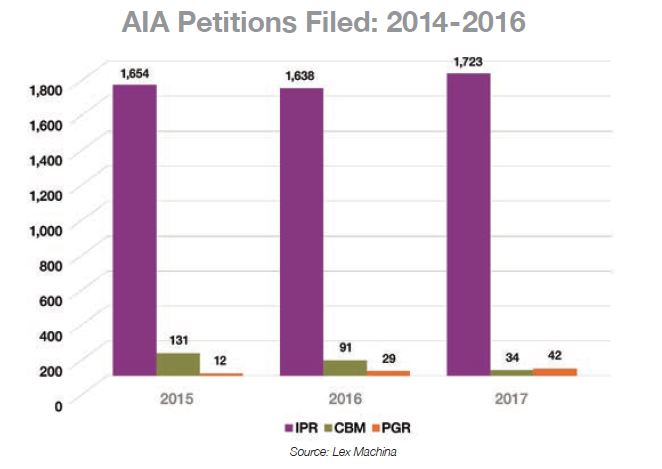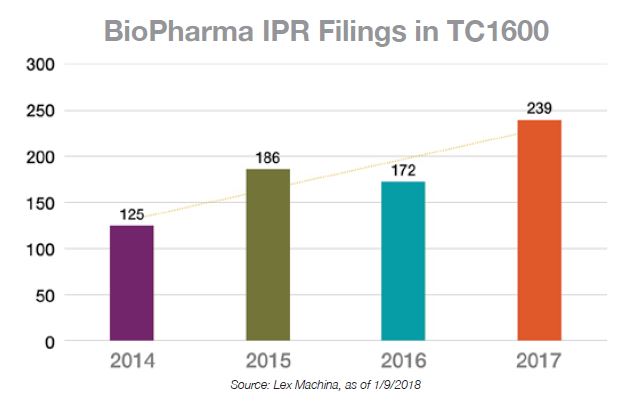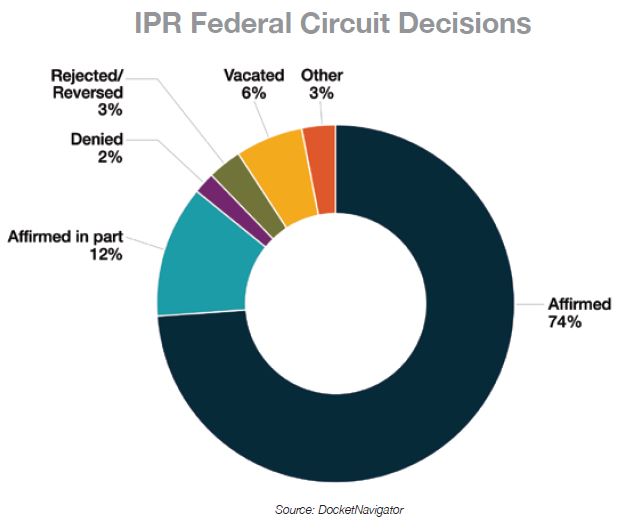Updates in Estoppel
In Shaw Indus. Group, Inc. v. Automated Creel Sys., Inc., 817 F.3d 1293 (Fed. Cir. 2016), the Federal Circuit decided that estoppel arising from 35 U.S.C. § 315(e) does not apply to grounds denied institution that are presented in an otherwise instituted petition for IPR. Shaw left open how estoppel applies to grounds not advanced in an instituted petition, and district courts are split on how to apply Shaw’s reasoning to these grounds. Until the Federal Circuit addresses the split, parties seeking to use the USPTO’s post-grant proceedings should weigh the possible outcomes in determining how to advance and defend against grounds of unpatentability before the PTAB.
Pursuant to Section 315(e), a petitioner (or its privy or real party-in-interest) is prevented from maintaining a challenge to any patent claim in civil litigation, ITC proceedings, or subsequent USPTO proceedings that is based “on any ground that the petitioner raised or reasonably could have raised during” an IPR in which a final written decision was issued on that claim. Interpreting this provision in Shaw, the Federal Circuit held that an “IPR does not begin until it is instituted,” so grounds that are not raised—nor could reasonably be raised—in an instituted IPR are not subject to estoppel. See Shaw, 817 F.3d at 1300 (Fed. Cir. 2016). In HP Inc. v. MPHJ Technology Investments, LLC, the Federal Circuit reiterated that “noninstituted grounds do not become a part of the IPR,” so “the noninstituted grounds were not raised and, as review was denied, could not be raised in the IPR.” HP Inc. v. MPHJ Technology Investments, LLC, 817 F.3d 1339, 1347 (Fed. Cir. 2016). The Federal Circuit’s reasoning in these cases, however, has left district courts divided regarding the scope of § 315(e).
Judge Morgan summarized this split in a June 2017 order. See Cobalt Boats, LLC v. Sea Ray Boats, Inc., No. 2:15cv21, 2017 WL 2605977, at *3 (E.D. Va. June 5, 2017).
The split in district courts is whether the rationale in Shaw means that grounds not raised in the initial IPR petition are similarly exempt from estoppel. Shaw only addressed noninstituted grounds in the IPR petition, which leaves significant room for interpretation. Courts with a broad reading of Shaw follow its statutory analysis to find that estoppel only applies to grounds that are both in the petition and instituted, which would mean that grounds not raised in the petition at all are similarly exempt from estoppel. See, e.g., Verinata Health., Inc. v. Ariosa Diagnostics, Inc., No. 12cv5501, 2017 WL 235048, at *3 (N.D. Cal. Jan. 19, 2017). Courts with a narrow reading of Shaw have policy concerns that Defendants will preserve patent invalidity arguments from the IPR petition and get two chances to argue invalidity, completely eviscerating the advantages of staying litigation for an IPR petition. See, e.g., Douglas Dynamics, LLC v. Meyer Prod. LLC, No. 14cv886, 2017 WL 1382556, at *4 (W.D. Wis. Apr. 18, 2017), reconsideration granted in part. No. 14cv886, 2017 WL 2116714 (W.D. Wis. May 15, 2017) (not changing the analysis regarding scope of estoppel). Id.
Judge Morgan went on to apply the “narrow” interpretation of Shaw, citing policy concerns regarding the implications of a defendant gaming the statute on a district court’s stay of trial during IPR proceedings. Id. Yet Judge Morgan’s approach is not universal.
While we await further word from the Federal Circuit on this split, parties that find themselves considering or forced into IPR must thoughtfully grapple with the current uncertainty. As petitioner, should all colorable grounds be asserted in your petition or should some be held back? What about “public use” prior art that is ineligible for IPR and can theoretically be reserved for a subsequent invalidity argument in district court? Do the eligible grounds you might raise in an IPR petition impact estoppel against this otherwise ineligible art? Compare Clearlamp LLC v. LKQ Corp., No. 12C2533, 2016 WL 4734389 (N.D. Ill. March 18, 2016) (holding that estoppel does not extend to prior art that was not reasonably available during an IPR, even if redundant or cumulative of prior art used during the IPR) with Cobalt, 2017 WL 2605977, at *3 (E.D. Va. June 5, 2017) (describing a Report & Recommendation from the Eastern District of Texas that “recommends that prior art products are also estopped when they only support arguments that the petitioner could have raised in IPR through the underlying patents or printed publications”). As a patent owner, should you consider reserving strong arguments against a ground until the post-institution response in an attempt to ensure indisputable estoppel? Answers to these questions are likely to be fact-specific and are best approached with a thoughtful review of precedent and consideration of broader case strategies.






